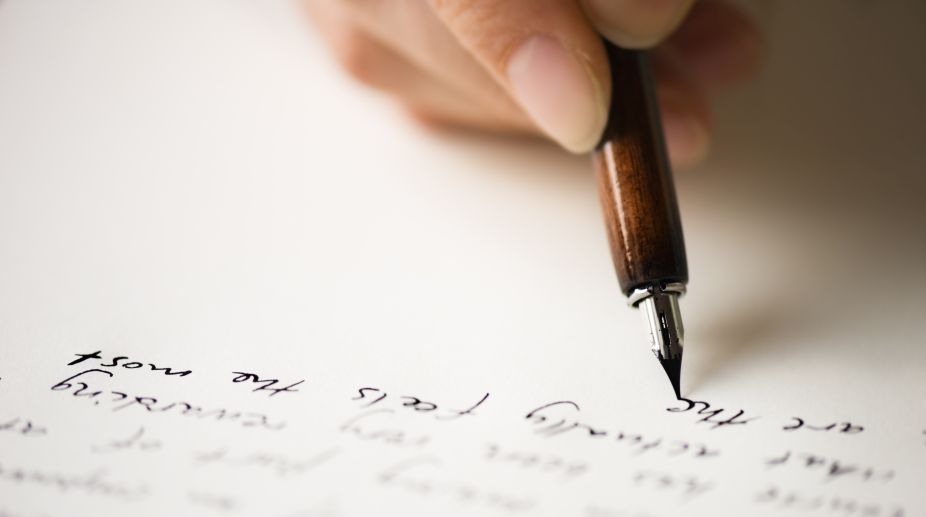Love for calligraphy draws Japanese girl to India
Calligraphy may be dying in an increasingly digitalised world, but the sheer love of the art has attracted a Japanese girl to India.
At a time when very few youngsters are taking to Arabic/Urdu calligraphy, Yuko Takaji took up the pen and is learning the intricacies of the art from Muqtar Ahmed, a Bengaluru-based calligrapher.
For someone born and brought up in Tokyo, Urdu is an alien language, but the 32-year-old speaks it with a fluency few can match even in the subcontinent.
After learning Urdu from Tokyo University of Foreign Studies (TUFS), Takaji decided to explore something which only a few dare to experiment with.
It looks strange as there are no similarities between her mothertongue and Urdu. She learnt calligraphy in Japanese but the same art in Arabic/Urdu is a totally different ball game — but she was determined.
It was 15 years ago that she decided to try her hand at Arabic calligraphy. “I saw a picture in a book. I thought it’s just a picture but was surprised when I read the caption that it’s made from the word ‘Allah’. It was so beautiful and I decided that I should learn Arabic calligraphy,” Takaji told IANS.
“There is a huge difference between Arabic and Japanese characters. I like Arabic characters because they look so beautiful,” Takaji said.
She learnt anaskh, an initial style of calligraphy, from her teacher Koichi Honda in Japan and, on his advice, came to India to learn other styles.
She is currently learning aruq’ah and is keen to continue learning till the anasta’liq level. She aims to master the art to the stage where she can write the characters the way she wants.
She first visited India in 2011 and learnt the basics at a madrasa in Delhi for a week. She came again in 2012 and this time spent a month to learn the art.
Takaji has so far visited India 16 times, not just to learn calligraphy but also to explore different parts of the country.
“Mujhe India ke log pasand hain. Logon se baat karna bohut accha lagta hai,” (I like people of India and love to talk to them), she said in Urdu.
Takaji, who has also visited Pakistan, believes calligraphy can serve as a medium to bring the people of the two countries together.
Muqtar, who is trying to revive calligraphy, is happy that the art is getting support from an unexpected quarter. “There are 17 Urdu/Arabic calligraphy centres in Japan and 350 Japanese are learning this art,” said Muqtar, whose works were displayed at an exhibition at Kyoto City International Community House last month.
Muqtar, who teaches calligraphy at the Institute of Indo-Islamic Arts and Culture in Bengaluru, said more youngsters in Japan were learning calligraphy. “They understand the importance of this art, which brings out the best in a man. Unfortunately, this is not happening in India where calligraphy once enjoyed royal patronage,” said Muqtar, who plans to work together with some calligraphy centres in Japan by imparting skills to their students.
Muqtar, whose art has been recognised at many international events, said three Americans also learnt calligraphy from him.

Originally hailing from a small town near Hyderabad, Muqtar’s calligraphic works adorn mosques in different parts of the world and are displayed at international exhibitions, in drawing rooms and even in private jets.